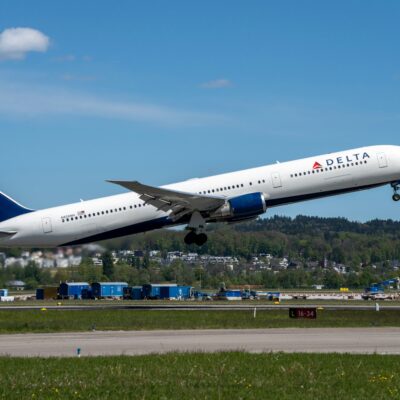Introduction to the importance of food and health
Welcome to a journey where food meets health, and the path to well-being is paved with delicious choices. In a world filled with tempting treats and convenience foods, it’s essential to understand how our diet impacts our overall health. Join us as we explore the power of food quality and lifestyle in creating a healthier you!
Welcome to a journey where food meets health, and every bite you take can make a difference. In the hustle and bustle of modern life, we often overlook the profound impact that our diet and lifestyle choices have on our overall well-being. From fueling our bodies with nutrient-dense foods to embracing healthy habits, this blog will delve into how what we eat shapes not just our physical health but also our mental clarity and energy levels. So grab a seat at the table as we explore the intricate connection between food and health!
Understanding food quality and its effects on the body
When it comes to our health, the quality of food we consume plays a crucial role. The saying “you are what you eat” couldn’t be more accurate. Food quality refers to the nutrient content, freshness, and overall goodness of the foods we put into our bodies.
Opting for whole, unprocessed foods rich in nutrients is key to supporting our well-being. Fresh fruits and vegetables provide essential vitamins and minerals that help keep us healthy and energized. Additionally, choosing lean proteins like chicken or fish can aid in muscle repair and growth.
On the other hand, processed foods high in sugar, unhealthy fats, and artificial additives can have negative effects on our bodies. These types of foods often lack essential nutrients while providing empty calories that contribute to weight gain and various health issues.
By understanding food quality and its impact on our bodies, we empower ourselves to make informed choices that support optimal health. Remember – fuel your body with real, nourishing foods for a vibrant life!
The role of lifestyle choices in maintaining good health
Our lifestyle choices play a significant role in determining our overall health and well-being. From the foods we eat to how much physical activity we engage in, every decision impacts our bodies in one way or another.
Regular exercise not only helps us stay fit but also boosts our mood and energy levels. Whether it’s going for a jog, practicing yoga, or hitting the gym, finding activities that we enjoy can make it easier to stick to a healthy routine.
Getting an adequate amount of sleep is crucial for repairing and rejuvenating our bodies. Quality rest allows our immune system to function optimally and promotes mental clarity throughout the day.
Managing stress through relaxation techniques like meditation or deep breathing exercises can lower cortisol levels and reduce the risk of various health issues associated with chronic stress. Finding balance in work, personal life, and leisure time is key to maintaining good mental and physical health.
Common dietary misconceptions and how they affect our well-being
When it comes to dietary misconceptions, there are plenty floating around that can impact our well-being without us even realizing it. One common myth is that all fats are bad for you. The truth is, our bodies need healthy fats like those found in avocados and nuts to function properly.
Another misconception is the belief that skipping meals will help with weight loss. In reality, this can lead to overeating later on and mess with your metabolism. Many people also think that going gluten-free automatically means healthier choices; however, processed gluten-free foods can be just as unhealthy as their gluten-containing counterparts.
It’s important to remember that balance and moderation are key when it comes to a healthy diet. Don’t fall for these common myths – educate yourself and make informed decisions about what you put into your body!
Tips for improving food quality and making healthier lifestyle choices
When it comes to improving food quality and making healthier lifestyle choices, small changes can lead to big results. Start by incorporating more whole foods into your diet like fruits, vegetables, whole grains, and lean proteins. These nutrient-dense options provide essential vitamins and minerals for optimal health.
Limit processed foods high in added sugars, unhealthy fats, and artificial ingredients. Instead, opt for homemade meals using fresh ingredients whenever possible. This way, you have full control over what goes into your body.
Stay hydrated by drinking plenty of water throughout the day. Water is crucial for digestion, nutrient absorption, and overall well-being. Additionally, prioritize regular physical activity to support a healthy metabolism and reduce the risk of chronic diseases.
Practice mindful eating by listening to your body’s hunger cues and choosing foods that nourish you from within. Prioritize sleep hygiene to allow your body to rest and rejuvenate properly each night. By making these simple yet impactful changes consistently, you can enhance both your food quality and lifestyle choices for long-term health benefits.
Conclusion: The connection between diet, food quality, and lifestyle in achieving optimal health
In today’s fast-paced world, where convenience often trumps quality, it’s crucial to remember that our health is directly impacted by what we eat and how we live. By focusing on improving food quality, making healthier lifestyle choices, and dispelling common dietary myths, we can pave the way for optimal well-being.
In today’s fast-paced world, the importance of food and health cannot be overstated. Our diet, the quality of food we consume, and our lifestyle choices all play significant roles in determining our overall well-being.
Understanding how different foods affect our bodies is crucial for making informed dietary decisions. Opting for nutrient-dense whole foods over processed ones can have a profound impact on our health. Fresh fruits, vegetables, whole grains, lean proteins, and healthy fats should form the foundation of a balanced diet.
Equally important are lifestyle choices such as regular exercise, stress management, quality sleep, and staying hydrated. These factors work hand in hand with diet to promote optimal health and well-being.
It’s essential to debunk common dietary misconceptions that may lead us astray from achieving good health. Fad diets promising quick fixes or demonizing entire food groups often do more harm than good in the long run.
By prioritizing food quality and making healthier lifestyle choices consistently, we empower ourselves to take charge of our health and vitality. Small changes can add up to significant improvements over time.
Remember that achieving optimal health is not just about what you eat but also how you live your life. The connection between diet, food quality, and lifestyle is undeniable when it comes to maintaining good health for years to come.
Remember, good health is not just about what you do occasionally but rather the habits you cultivate daily. So let’s prioritize nutritious foods and positive lifestyle changes to achieve a happier and healthier life. Here’s to embracing the connection between diet, food quality, and lifestyle in our journey towards overall wellness!





